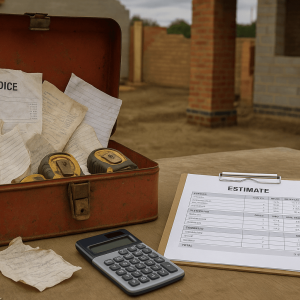The construction landscape in the UK isn’t just about bricks and mortar; it’s about creating environments that everyone can access and enjoy. Think of a world where everyone, regardless of physical ability, can move freely. That’s the goal of accessible construction, and it’s a vital aspect of social inclusion and equality.
The Cornerstone of Accessibility: Legal Frameworks
In the UK, the foundation of accessible construction is laid by robust legislation such as the Equality Act 2010 and Building Regulations Part M. These laws ensure that individuals with disabilities are considered right from the architectural drawing board, mandating features like wide doorways and accessible toilets in all new and significantly renovated buildings.
Building a Better Quality of Life
Imagine being able to navigate your local shopping center or a new apartment complex comfortably. For many with mobility issues, this isn’t just convenience; it’s a lifeline to a fuller, more independent life. Accessible construction opens up worlds, making daily tasks less of a challenge and promoting independence.
Economic Incentives: Good for Business, Great for Society
Designing with accessibility in mind isn’t just a legal duty; it’s also good business sense. Accessible facilities attract a broader range of customers and employees, including the elderly and families with young children, boosting both revenue and community life. Moreover, having accessible workplaces can increase employment opportunities for individuals with disabilities, which in turn can decrease reliance on social welfare.
Responding to Demographic Changes
The UK’s population is ageing. Designing buildings and infrastructure that can adapt to this change is not a matter of if but when. Accessibility-enhanced construction allows older adults to maintain their independence and stay in their communities without the constant need for adjustments as their mobility changes.
Challenges on the Horizon
Despite progress, challenges such as retrofitting historic buildings and updating professional training remain. Balancing heritage preservation with modern accessibility needs and ensuring all construction professionals are up-to-date with the latest standards are hurdles that still need overcoming.
Blueprint for the Future of Accessible Construction
Moving forward, enhancing legislation and enforcing accessibility codes more rigorously are key. Financial incentives for businesses to adopt accessible features and public awareness campaigns can drive home the importance of inclusivity. We also need to embed principles of accessible design into educational curriculums for future architects and builders.
Creating A Society for All
Through continued advocacy, innovation, and commitment to inclusive design, the future of UK construction looks not just accessible, but welcoming to all, regardless of physical ability.
FAQs About Accessible Construction in the UK
What are the main laws governing accessible construction in the UK?
The Equality Act 2010 and the Building Regulations Part M are foundational to ensuring that accessibility is a primary consideration in construction projects.
Why is accessible construction important for businesses?
Accessibility broadens customer and employee bases, creating opportunities for increased revenue and a more inclusive workforce.
How does accessible construction benefit the aging population?
It allows older adults to maintain independence and stay in their homes and communities without significant lifestyle changes.
What are common challenges in retrofitting older buildings for accessibility?
The challenges include balancing the preservation of historical features with the installation of modern accessibility improvements, often requiring innovative architectural solutions.
How can public awareness improve accessible construction practices?
Increased awareness can create demand for accessible spaces, pushing businesses to prioritize inclusivity and accessibility in their constructions and renovations.











